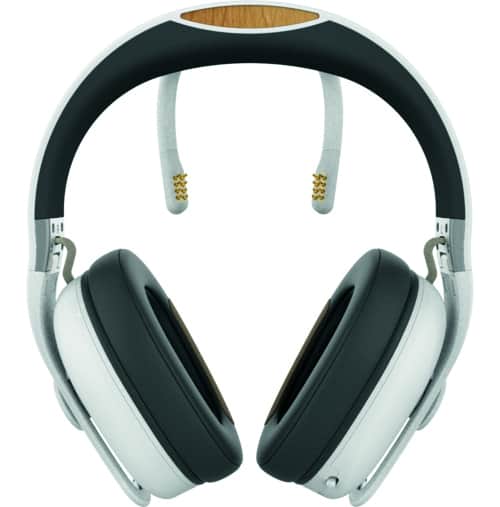We tested it for you: Melomind

By the editorial staff of HEC Stories
Melomind, what is it?
Melomind is defined as a brain-training solution dedicated to well-being in the workplace. In fact, it is a plastic headset that connects via Bluetooth to your phone using a dedicated application (iOS and Android). It is very similar to any audio headset (you can also use it to listen to your music), except that it has two additional arms ending in metal electrodes that sit directly on the scalp. The objective: reduce stress in order to increase efficiency.
What is the science behind it?

A team of neuroscientists came up with the idea and designed the device in partnership with the Brain and Spinal Cord Institute (ICM). So, on the face of it, serious stuff. It is based on the principle of “neurofeedback”. The headphones emit mood-setting sounds (forests, beaches, and the like), which are supposed to promote relaxation. At the same time, it indicates your brain activity (measured by the electrodes) through a sound “gage” — a kind of continuous noise whose intensity is correlated with your neural activity. When you can no longer hear the noise, it means you’re calm.
Does it work?
The opinion of our three testers with regard to the sense of relaxation provided by the device is, on the whole, positive. A fifteen-minute session is enough to produce an effect, and by the end of it, you do have a feeling of well-being. The intensity of that feeling varies, but it is real. Wouldn’t spending fifteen minutes listening to relaxing music without a “neurofeedback” device have the same result? It’s hard to say. Nor is it easy to judge the accuracy of the correlation between the gage and your subjective sense of relaxation. The noise sometimes remains at a high level despite your sensations. But the main drawback arises from the conditions for using the device. First of all, pairing the device via Bluetooth is not that straightforward, and it took several attempts to get it to work (an update is planned to fix this glitch). Secondly, if you happen to have a thick head of hair, then putting the headset on can be tricky, and you’ll need nimble fingers to get the electrodes in place. Lastly, the user needs to be very comfortable in the face of social pressure (if not to say totally impervious to it). If you work in an open space office, it’s not always easy to sit perfectly still for fifteen minutes with your eyes closed and a funny-looking device on your head. All the more so since the headphones do not fully cut you off from the surrounding noise.
Melomind, who is it for?
In theory, everyone! Stress has a negative impact on health and productivity, and it affects nearly 40% of workers in France. But who really has the time, patience, and self-discipline required for regular relaxation sessions? In reality, this headset is mainly (or maybe only?) for those who work in companies willing to spend some money for the well-being of their employees. For now, it is only marketed to businesses.
Published by Arthur Haimovici

